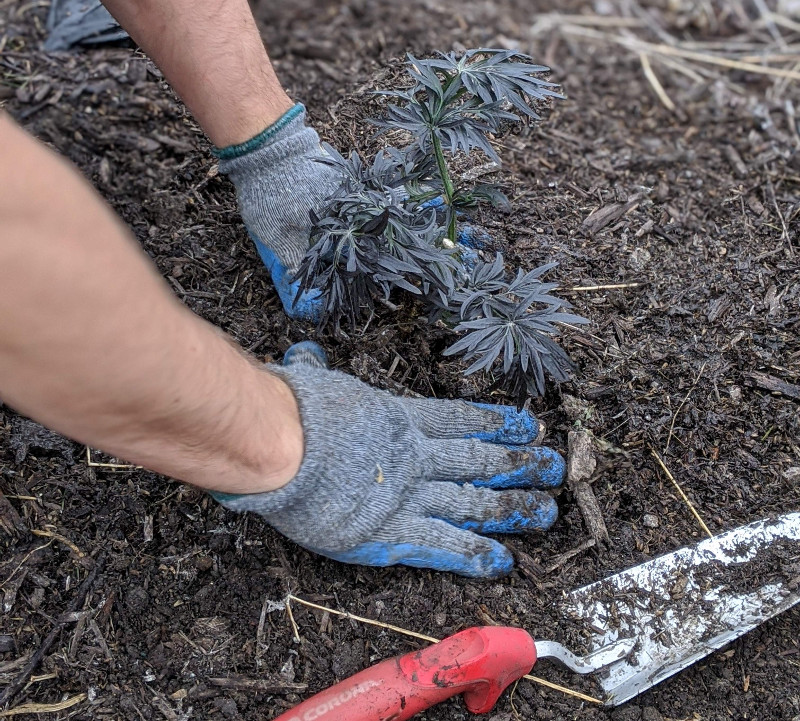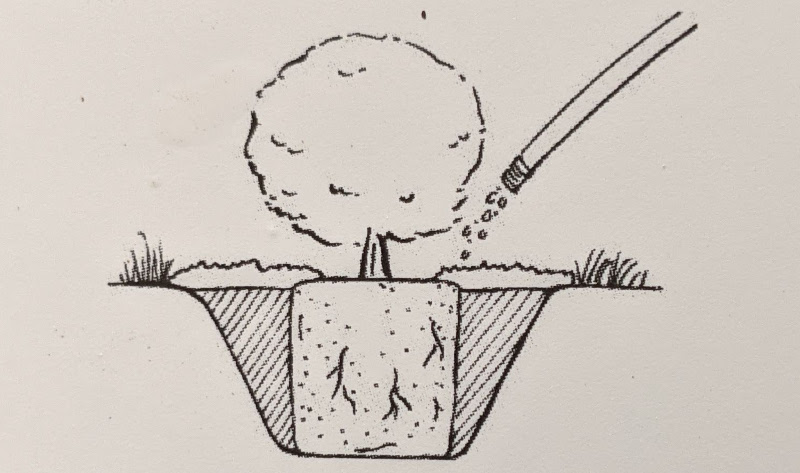Planting new shrubs, perennials, grasses and other landscaping plants can be very intimidating. However, by following simple steps, you will ensure the plants will live to be healthy and beautiful looking for years to come.

Finding The Best Location For Plants
Before you start digging a hole for your new plants, make sure you have a location picked out that will allow the plant to thrive. If you are like us, and purchase plants without knowing where you are going to put them, this is a crucial step. There are two main considerations when choosing the right location.
1. Light Requirements
Be sure to the plant's light requirements. It is very important that you choose a location that the plant can handle. Here are the definitions for different light categories:
Full Sun - 6 or more hours of direct sunlight
Partial Sun - 4-6 hours of direct sun or filtered sun per day
Partial Shade - 2 to 4 hours of direct sun or filtered sun per day
Full Shade - little to no direct sunlight throughout the day
In the United States, full sunlight is usually the south side of the house, or in a location that receives very little filtering or shade from trees, buildings, fences and other structures. Partial sun/shade are typically the west and east sides of houses. And full shade is typically a northern exposure.
|
Light Requirement |
Hours of Sunlight |
Side of House |
|
Full Sun |
6+ |
South |
|
Partial Sun |
4-6 |
East/West |
|
Partial Shade |
2-4 |
East/West |
|
Full Shade |
<2 |
North |
2. Soil Requirements
Another consideration for choosing the right location is the soil. Most plants require well-drained soil. The soil type isn’t as important, as long as it will drain. Clay, compacted, and rocky soils sometimes have problems draining. To test this out, dig a hole and fill it with water. Come back in 2 hours and check to see if there is any water still in the hole. If there is still standing water, the soil does not drain well. Also, If you are planting in a garden planter or container, be sure it has drainage holes.
Some shrubs that can handle poorly drained soil are sweetspire, buttonbush, dogwood and summersweet.
Best Time To Plant New Trees, Shrubs, Perennials & Grasses
There are many different myths about the best time to plant or transplant. Spring and fall are ideal times; however, you can plant anytime of the year. The main thing you need to do is ensure the plant is well watered, especially during hot summer months. During summer, we will sometimes pause shipping during times of extreme heat. This is not because you cannot plant at this time, but because the plants get too hot in the delivery trucks and will wither if they are in the truck too long.
For most growing zones, we do not recommend planting in the winter. Planting during winter is almost impossible if the ground is frozen, and it is difficult to know how much to water new plants during the winter months. If you live in a climate with mild winters, you have much more latitude to plant during this season.
How Much Space Between Plants
For mass plantings, use the full mature width of the plant as a guide for spacing between plants. For example, if a plant will reach 4 feet wide at maturity, space each plant at least 4 feet apart, center on center. When creating a hedge, you can space plants a little closer to each other. A 4-foot wide plant, for example, can be spaced 3 feet apart, center on center.
When planting next to a building, use the same guidelines. A plant that spreads to 4 feet should be planted 4 feet away from a building or structure. Some plants will require even more distance away from structures due to the eventual height of the plant and the overhang of the building’s roof.
Some plants, such as shrub roses, will require even more space between them for better air circulation. Other plants may require a wider plant spacing so you can access the plant's flowers, fruits, and vegetables for harvesting.
Tips For Planting New Plants
-
Dig a hole a bit wider than the size of the root ball or current container
-
The hole should not be deeper than the root ball
-
Plant 25% higher than the surrounding soil
-
Disturb the roots if they are growing in a circular pattern or rootbound
-
Taper soil to cover all of the roots
-
Lightly tamp down the soil around the plant
-
Apply 2-3 inches of mulch at least as wide as the hole
-
Water the plants at least 2-3 times a week
-
Keep the plant tags for future questions!

Planting New Plants In A Garden Planter
When choosing a garden planter, choose one that is larger than the current container. That is the minimum requirement. We recommend choosing a planter that can accommodate the full mature size of the plant, so you do not need to re-pot as frequently. Be sure the container has drainage holes at the bottom. You can place a piece of screen, a coffee filter or newspaper over the drainage holes to prevent the dirt from washing out. Make sure the blockage doesn’t prevent the water from draining though. Put the planter in a location where the plant will get the proper amount of sunlight.
